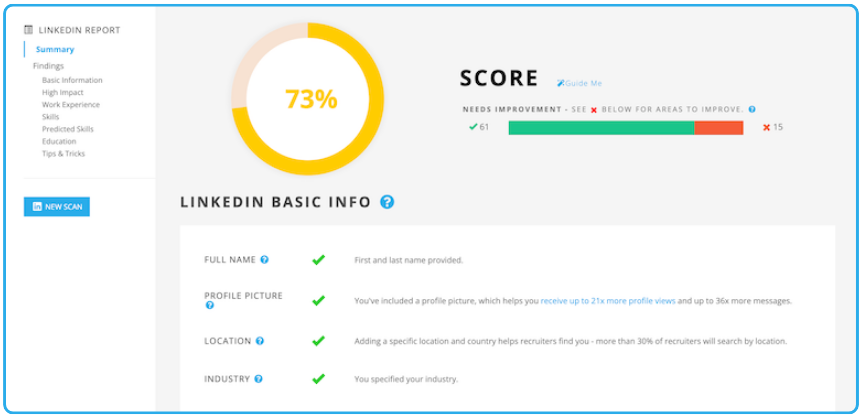Did you know that more and more people are deciding to make a career change at 50? This reflects a growing awareness that it’s never too late for a fresh start.
Some 50-year-olds are “downshifting to something that’s a little bit less stressful and has more flexibility,” says Geoffrey Sanzenbacher, a professor at the Center for Retirement Research at Boston College.
Others are ambitiously jumping into demanding new careers. Why? Because people are living longer these days. It’s now possible to start a whole new career in your 50s and have that career for over 20 years.
Is 50 too old to start a new career?
Common myths suggest it’s too late to make a career shift at 50. However, a deeper look shows that these myths are largely untrue:
Myth 1: Employers prefer younger candidates
Many assume that employers always favor younger candidates over those in their 50s. Age bias does exist, but employers increasingly value the experience, maturity, and well-rounded skills of older candidates.
Myth 2: It’s too late to learn new skills
Another common myth is that individuals over 50 are less capable of learning new skills. This couldn’t be further from the truth. Lifelong learning has become more accessible than ever. There are plenty of online courses, workshops, and certifications available today.
Myth 3: Changing careers means starting over
While a career change may require some level of adjustment, it doesn’t mean disregarding all previous experience. Transferable skills like communication, problem-solving, creativity, collaboration, organization, and time management all play a crucial role in transitioning to a new field.
“The world of work is changing rapidly,” says business coach and consultant Aiyaz Uddin. “Many companies today actively promote age diversity and recognize the unique strengths seasoned professionals bring to the table.”
Can you change careers at 50 with no degree?
Absolutely! Changing careers at 50 without a degree is not only possible but also increasingly common.
“The average shelf life of a degree is only 5 years,” according to career coach John Ribeiro. “Experience and practical working knowledge outweigh any degree, your goal is to explain how!”
Some industries welcome experienced, mature candidates more than others. We’ll take a look at some of these industries below.
But first, it’s important to identify the skills and experience you have that employers will find most valuable.
What hard and soft skills do you possess?
The first step in any career change involves self-assessment. What are you good at? What skills do you have? What do you enjoy doing?
Also, consider your values. What matters most to you in a job? Is it the work-life balance, the mission of the company, or perhaps the opportunity to mentor others?
To learn more about the skills you already have, paste your resume into Jobscan’s Career Change Tool. You’ll then see two things. One is a list of potential careers you should consider. The other is a list of your hard and soft skills.
Hard skills are teachable abilities, such as coding or accounting. Soft skills are interpersonal skills such as communication and problem-solving.
Soft skills are especially important for a career change. This is because they’re transferable and can be used in any job in any field.

Read more: The Top 10 Best Resume Skills To Put On Your Resume
Do you have enough money to switch careers?
When considering a career change later in life, you should also assess your finances.
Will transitioning to a new career reduce your income? Do you have a safety net, such as an emergency fund, to support you through unexpected challenges?
A career change can also impact your retirement plans. It might be helpful to consult a financial advisor to see how changing careers could affect your long-term financial goals.
Understanding the financial implications and preparing accordingly can provide peace of mind as you pursue a new career path.
What is the best career to start at 50?
Here are some of the industries that are most welcoming to those who want to change careers at 50.
Teaching
If you think you’re a good teacher, education can be a fulfilling career to transition into. This is because you can use your skills, experience, and maturity to help shape a new generation.
Many regions offer alternative certification programs. Each state in the U.S. has its own certification requirements and processes. Visit your state education department’s website to find out more.
Skilled trades
Skilled trades are always in high demand. Careers in carpentry, plumbing, electric work, and other trades can be fulfilling and lucrative. They also provide chances for self-employment and flexible hours.
Community colleges can be a great starting point for career changers looking to gain new skills. Many offer vocational and technical training programs in various trades.
Coaching and consulting
One of the best ways to leverage your experience is by becoming a coach or consultant. The following types of coaches and consultant are always in high demand:
- Executive coach – Enhance leadership skills and capabilities in managers and executives.
- Business strategy consultant – Assist companies in improving their business performance.
- Career coach – Offer guidance to individuals seeking career advancement.
- Financial consultant – Provide advice on financial planning, investment, and retirement planning.
- Health and wellness coach – Support clients in achieving their health and wellness goals.
Real Estate
Real estate agents help clients navigate the complexities of buying, selling, and renting properties. Agents typically earn income through commissions. This means your income will vary, but making a good living selling real estate is possible.
To become an agent, you’ll need to complete a course from an accredited real estate licensing school. Then you must pass your state’s real estate licensing exam.
Freelancing
Freelancing allows you to choose when and where you work. You can freelance in writing, graphic design, web development, consulting, marketing, and more. Websites like Upwork, Freelancer, and Fiverr connect freelancers with clients looking for specific services.
Health and wellness
There’s a high demand for personal trainers, nutritionists, and wellness coaches in today’s health-conscious society. Depending on the specific role you’re interested in, you might have to obtain relevant certifications or degrees.
Still not sure what career to chose?
Try the Jobscan Career Change tool. Just paste your resume into the tool, and it will show you which careers you are most suited for.
Read more: How to Change Careers: Everything You Need to Know
Acquire skills without returning to school
You don’t need to go back to school to acquire valuable new skills. The following websites offer free and paid courses you can take from the comfort of your own home:
Coursera: Offers courses from universities and colleges around the world. Many offer certificates and degree programs.
edX: Presents courses from universities such as Harvard and MIT. Many offer professional certificates and online degree programs in various fields.
Udemy: Features a vast selection of courses, from web development and photography to personal improvement and marketing.
LinkedIn Learning: Offers video courses taught by industry experts in software, creative, and business skills.
Skillshare: Focuses on creative education, including courses on illustration, design, photography, video, freelancing, and more.
How to create an effective resume for a career change
Your resume needs to show that you want to change careers. It also needs to highlight the skills and qualifications that make you an ideal candidate for your new field. To update your resume, do the following:
Write a resume summary
Your resume summary is like an elevator pitch – it quickly tells hiring managers who are you professionally. It also tells them that you’re seeking a career change.
Your summary should focus on the skills and experiences that fit the new role. Also, try to highlight a key achievement or two. Your goal is to show hiring managers that you can make an impact if hired.
Here’s an example of a resume summary for a career changer:

Read more: How to Write an Effective Resume Summary
Highlight your transferable skills
Transferable skills are “the golden currency of the modern job market,” says Aiyaz Uddin. “Problem-solving, communication, leadership, adaptability – these are just a few examples that shine brighter than any piece of paper. Highlight these skills in your resume and interviews, showcasing how they translate to your desired field.”
The best places to highlight your transferable skills on your resume are:
- Your resume headline and summary
- Your work experience section
- Your skills section
Volunteer work can also show off your transferable skills. For example, if you’ve coached youth sports, you used communication and organizational skills.
If you’re having trouble identifying your transferable skills, paste your resume into Jobscan’s Career Change Tool. It will analyze your resume and tell you which transferable skills you have.
Read more: How to Write a Career Change Resume
Tailor your resume to get more job opportunities
Don’t make the common mistake of creating only one resume and sending it out with every application!
Most companies today use applicant tracking systems (ATS) to collect and sort resumes. When you submit your resume it goes directly into the ATS database. Hiring managers then search through the database for suitable resumes. They do this by typing keywords into the ATS search bar. If your resume doesn’t contain these keywords it won’t be found.
To tailor your resume, first read the job description and determine which keywords are the most important. Then add them to your resume.
Tailoring each resume can be time-consuming. Fortunately, there are now digital tools designed to help job seekers tailor their resumes faster.
Jobscan’s resume scanner analyzes your resume against the job description and provides you with a resume score. The higher your score the more likely it is that a hiring manager will find your resume and ask you to interview. Here’s a sample resume score with keyword suggestions for increasing your score:

You can try Jobscan’s resume scanner for free here.
Update your LinkedIn profile to attract recruiters
Your LinkedIn profile should also be updated to reflect your interest in changing careers.
Just like your resume, your LinkedIn profile should include relevant keywords. Again, read the job description to find the keywords recruiters are most likely to search for.
If you want to take the guesswork out of tailoring your LinkedIn profile, try Jobscan’s LinkedIn Optimization tool. Just paste three dream job listings into the tool. It then tells you how to get a high-scoring profile that will attract the attention of recruiters.

Read more: How to Create a LinkedIn Profile Recruiters Actually Read
How to network on LinkedIn
LinkedIn is a great place to network, which is especially important if you’re changing careers at 50. Here are some tips for building a new professional network using LinkedIn:
- Participate in LinkedIn groups related to your target industry. This is a great way to connect with like-minded professionals and stay informed about industry trends.
- Write articles or share posts about your new career field. This can help establish your interest and knowledge in the area, attracting the attention of peers and recruiters.
- Reach out to professionals in your desired industry. Ask to interview them. This can provide valuable insights, advice, and potentially open doors to new opportunities.
How to write a career change cover letter
A cover letter is especially important for career changers. It allows you to explain in more detail why you are seeking a new career path. In your cover letter, you should:
- Focus on your transferable skills.
- Mention achievements that are relevant to the new role.
- Be enthusiastic about the new field you want to enter.
- Show your readiness to tackle new challenges.
Your career change cover letter needs to tell a compelling story about your career journey. It should show why the change makes sense for you now, and how you can contribute to a new role.
Read more: How to Write a Career Change Cover Letter
How to overcome ageism in the workplace
Ageism can be a significant hurdle for those making a career change at 50. To combat age-related stereotypes, focus on the following:
- Emphasize your experience and the unique skills you bring to the table.
- Stress your transferable skills like adaptability, problem-solving, communication, organization, and leadership.
- Get referrals or recommendations through networking. This can help you get past age bias.
- Stay current with industry trends and technologies. This demonstrates your commitment to continuous learning and adaptability.
How to stay positive when changing careers
Navigating a career change, especially at 50, can test your patience and impact your mental health. Here are some ways you can maintain a positive outlook:
- Set realistic goals and celebrate small victories to keep your spirits high.
- Engage in activities that promote well-being. These can include exercise, hobbies, or meditation.
- Surround yourself with a supportive network of friends, family, and peers. They understand your goals and can offer encouragement.
- Embrace the journey, knowing that each step brings you closer to a fulfilling new career.
The benefits of changing careers at 50
When things get tough during your job search, try to remind yourself of why you decided to change careers in the first place.
Perhaps you want a career that aligns more with your passions and values. Or maybe you want less stress and a greater work-life balance. Remember that your goal is to feel more engaged at work and have a deeper sense of satisfaction and accomplishment.
Reminding yourself of these things will keep you motivated to keep pursuing your dreams.
Additional resources
- How to Make a Career Change at 30
- How to Make a Career Change at 40
- How to Change Careers in 5 Steps
Key takeaways
- Embrace change: It’s possible and rewarding to shift careers at 50, with many seeking less stress or new challenges.
- Myth busting: Age doesn’t limit learning new skills or starting anew. Employers value the experience and skills that come with age.
- Skills over degrees: Practical experience often outweighs formal education. Self-assess to identify transferable hard and soft skills.
- Financial planning: Assess finances and potential impacts on income and retirement before making a switch.
- Welcoming industries: Fields like teaching, skilled trades, coaching, consulting, real estate, freelancing, and health and wellness are open to career changers.
- Learning resources: Online platforms offer courses to gain new skills without formal education.
- Update your resume: Tailor your resume and LinkedIn profile to highlight relevant skills and experiences for your new career path.
- Networking: Use LinkedIn for networking and showcasing your interest in your new field.
- Combat ageism: Highlight your unique skills and stay updated with industry trends.
- Stay positive: Maintain a positive outlook with realistic goals and a supportive network.
- Focus on your why: Remember the reasons behind your career change to stay motivated.
FAQs
To successfully change careers at 50, leverage your experience and identify transferable skills. Focus on fields that appreciate maturity, like teaching or consulting. Update your resume and LinkedIn to align with your new path. Use online courses to bridge skill gaps. Engage in networking, especially on LinkedIn, to connect with industry professionals. Remember, your unique skills and experiences are valuable assets in transitioning to a rewarding new career.
To find the career you want in your 50s, start by evaluating your interests, skills, and experiences. Research careers that value experience and maturity, such as consulting or teaching. Network with industry professionals for insights and consider updating your skills through online courses. Focus on fields open to career changers, and be open to roles that can serve as stepping stones to your desired path. Use Jobscan’s Career Change tool to give you ideas for potential careers that fit your experience and skill set.
Yes, it can be more challenging to get hired after 50 due to age bias in some industries, but leveraging your experience, networking, and adapting to current market demands can significantly improve your chances.

















